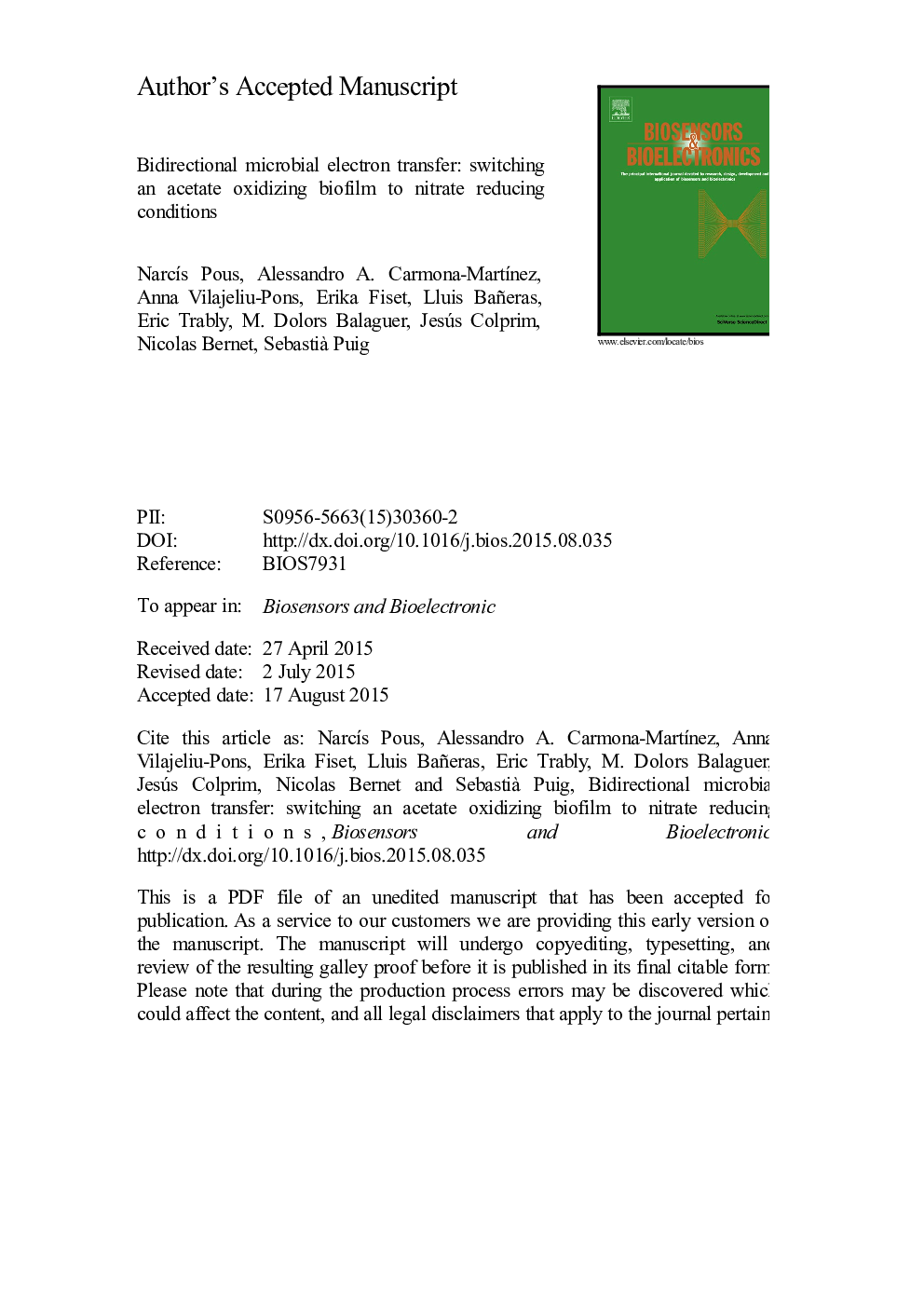| کد مقاله | کد نشریه | سال انتشار | مقاله انگلیسی | نسخه تمام متن |
|---|---|---|---|---|
| 7231474 | 1470956 | 2016 | 30 صفحه PDF | دانلود رایگان |
عنوان انگلیسی مقاله ISI
Bidirectional microbial electron transfer: Switching an acetate oxidizing biofilm to nitrate reducing conditions
ترجمه فارسی عنوان
انتقال الکترون الکترونیک میکروبی دو طرفه: تعویض بیوفیلم اکسید کننده استات به شرایط کاهش نیترات
دانلود مقاله + سفارش ترجمه
دانلود مقاله ISI انگلیسی
رایگان برای ایرانیان
کلمات کلیدی
موضوعات مرتبط
مهندسی و علوم پایه
شیمی
شیمی آنالیزی یا شیمی تجزیه
چکیده انگلیسی
Up to date a few electroactive bacteria embedded in biofilms are described to catalyze both anodic and cathodic reactions in bioelectrochemical systems (i.e. bidirectional electron transfer). How these bacteria transfer electrons to or from the electrode is still uncertain. In this study the extracellular electron transfer mechanism of bacteria within an electroactive biofilm was investigated by using cyclic voltammetry (CV) and differential pulse voltammetry (DPV). First, a mature anodic electroactive biofilm was developed from an activated sludge sample (inoculum), acetate as electron donor and a poised electrode (+397 mV vs. SHE). Later, this biofilm was “switched” to biocathodic conditions by feeding it with a medium containing nitrates and poising the electrode at â303 mV vs. SHE. The electrochemical characterization indicated that both, acetate oxidation and nitrate reduction took place at a similar formal potential of â175±05 and â175±34 mV vs. SHE, respectively. The biofilm was predominantly composed by Geobacter sp. at both experimental conditions. Taken together, the results indicated that both processes could be catalyzed by using the same electron conduit, and most likely by the same bacterial consortium. Hence, this study suggests that electroactive bacteria within biofilms could use the same electron transfer conduit for catalyzing anodic and cathodic reactions.
ناشر
Database: Elsevier - ScienceDirect (ساینس دایرکت)
Journal: Biosensors and Bioelectronics - Volume 75, 15 January 2016, Pages 352-358
Journal: Biosensors and Bioelectronics - Volume 75, 15 January 2016, Pages 352-358
نویسندگان
NarcÃs Pous, Alessandro A. Carmona-MartÃnez, Anna Vilajeliu-Pons, Erika Fiset, Lluis Bañeras, Eric Trably, M. Dolors Balaguer, Jesús Colprim, Nicolas Bernet, Sebastià Puig,
